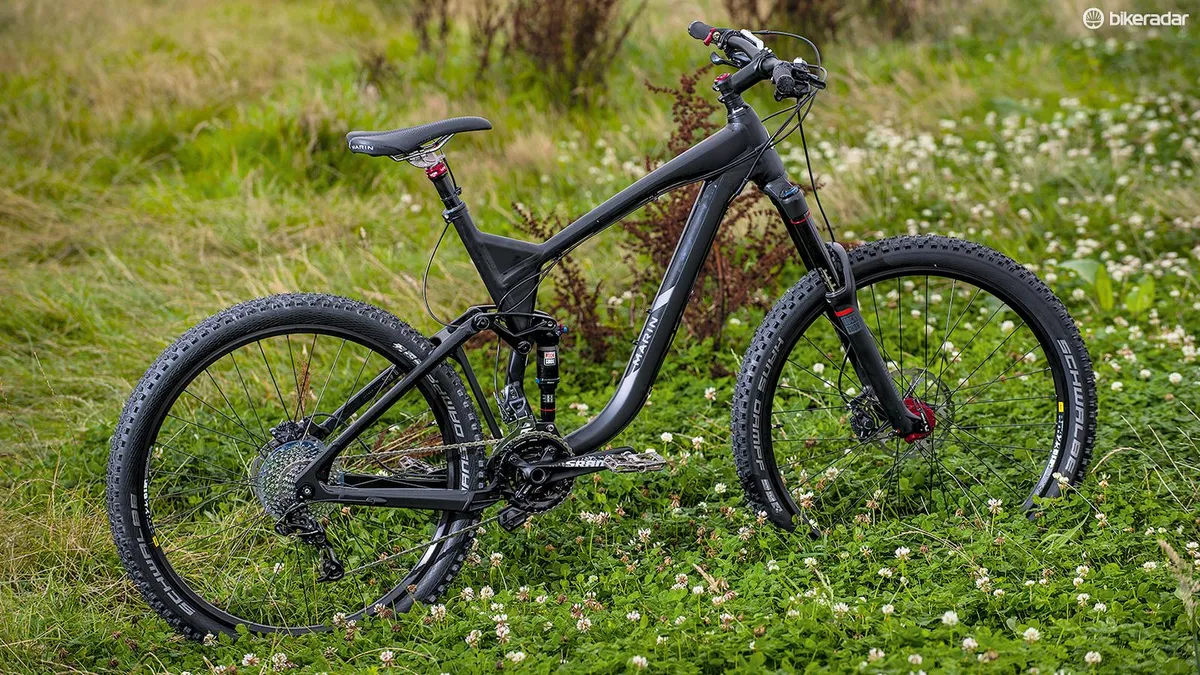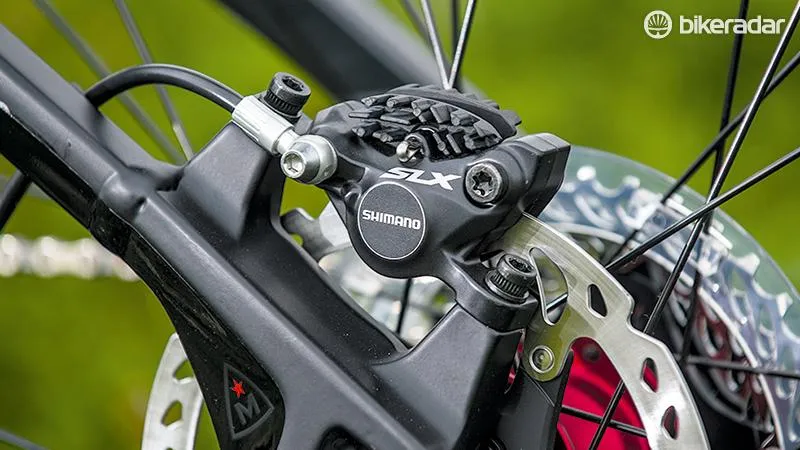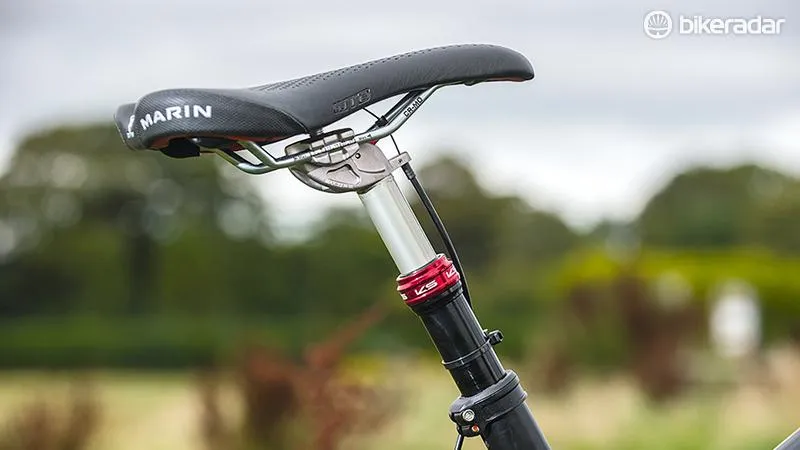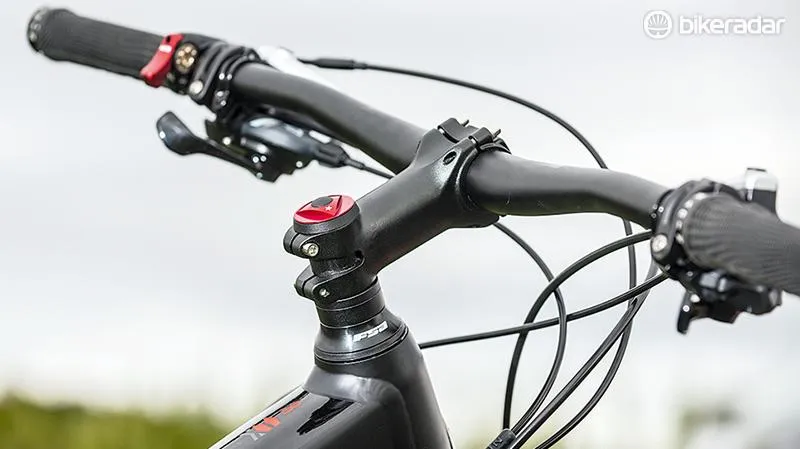As the name perhaps suggests, the Attack Trail is Marin’s offering into the aggressive trail bike market, now inevitably referred to as ‘enduro’. The XT8 model we tested – a 2015 edition – sits towards the budget end of a series of seven bikes. We put it thoroughly to the test on a diverse range of terrain.
The hydroformed alloy frame uses Marin’s QUAD-Link 3.0 suspension platform, which offers 150mm of rear travel. Controlled by a RockShox Monarch RL shock, the rear suspension remains impressively supple, while the shock can be locked out for efficient pedalling. When using the granny ring, this is hardly necessary as the pedal-bob is minimal, and the shock can happily be left open without excessive bob, but in the larger chainring the bike is more prone to bobbing as the bike’s inherent anti-squat is reduced. The frame is usefully stiff too, keeping the bike feeling sharp when cornering hard.
Trouble fitting in
While the BB height is reasonably low at 335mm, the head angle is rather conservative at 66.5 degrees, and the frame is on the short side for a long-travel enduro bike. Even with a 90mm stem (size XL), the bars are a little closer than we’d like for climbing comfort and the long stem/short frame combination makes for an uneasy descender, unwilling to be pushed hard on tough downhill sections.
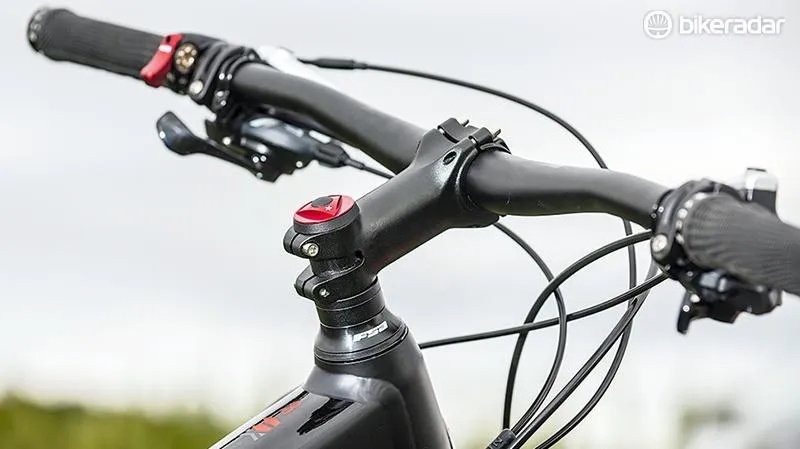
The long stem/short frame combo makes descents tricky
At 6ft 3in / 191cm I sit right in the middle of the XL section of Marin’s sizing chart, yet the test bike felt very cramped indeed. Also, the seat tubes are tall, preventing smaller riders from sizing-up without running the risk of being unable to drop the saddle fully out of the way.
Fortunately, the most important fit measurement – frame reach – doesn’t become too much shorter in the smaller frame sizes, so littler riders will be greeted by a proportionally roomier frame. While our XL sample has a relatively tiny reach figure of 448mm, the medium’s reach is not too much shorter at 425mm, which is about average for a medium long-travel bike.
Another thing to bear in mind is that the seat tube is offset, meaning that taller riders will experience a slacker seat angle. For me, this was problematic on steep climbs, as the front end was prone to lifting in spite of the long stem and despite pushing the saddle forward on the rails.
Generous gearing
The cramped cockpit also diminishes climbing vigour, because the close-up handlebar position forces a hunched posture. Gearing is plentiful, though, and switching to the granny ring allows for efficient spinning on most climbs, despite the hefty 15.1kg mass.
For the price, the spec list is well chosen and solid, if not flashy. The RockShox Pike fork is a highlight, and continued to impress here with suppleness and controlled support.

The bike is more bob-prone when in the larger chainring
The powerful Shimano SLX brakes performed flawlessly too, as did the SRAM X9/X7 gearing, which uses a lower chain guide to keep the chain on track. This did its job throughout testing, but is a little draggy.
Mavic XM423 tubeless-ready rims make for a solid and stiff, if weighty, wheelset, but we can’t say much about the reliability of the unnamed hubs. The major spec shortfall comes in the form of the bar and stem. Despite the short frame, we’d still prefer a shorter stem to improve descending confidence, even at the expense of climbing comfort, and the 740mm bar is rather narrow for such a long-travel bike.
Suspension sweetener
The Pike fork dealt predictably well with rough terrain, and provides the necessary support and stiffness to deal with the over-the-front riding position. The rear sus is impressive too, with plenty of progressivity to resist harsh bottom-out or excessive wallowing.
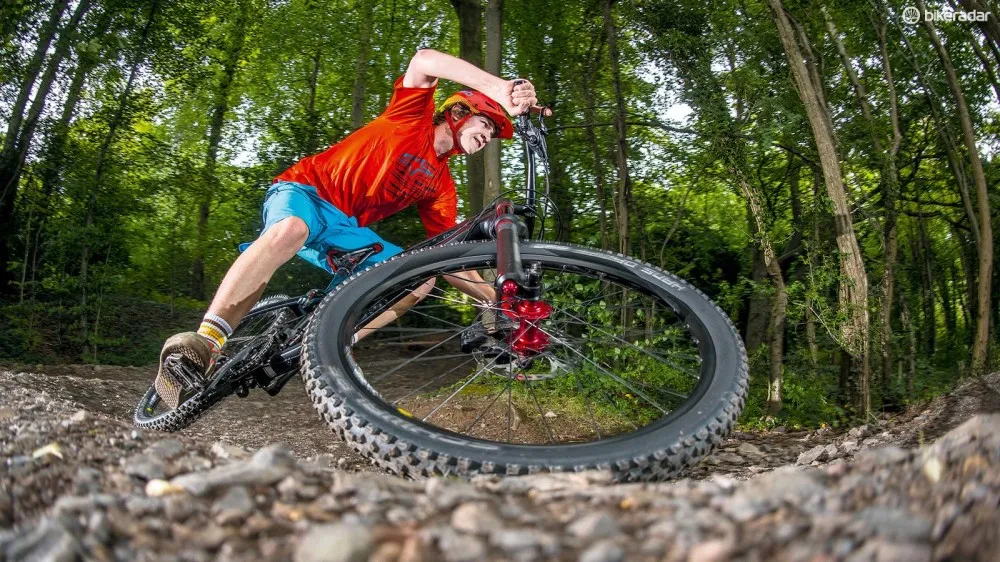
The frame's creditable stiffness came to the fore when cornering hard
The suspension is not overly efficient in the bigger chainring, but this allows it to remain very active over bumps, helping the Hans Dampf treads to dig out maximum traction from the trail, and the shock is easily locked-out if need be.
Despite this, the short front-centre and long stem dominate the ride, making it difficult to push hard in turns or attack steep terrain. The bike feels nervous and twitchy, especially at high speeds, although as smaller frames are proportionally longer relative to their intended rider, the short front end will likely bother these riders less if a shorter stem was fitted.
Despite the good suspension performance and generally decent spec, the odd sizing makes us wary of recommending unless you get the chance to try before buying.
Since publishing this review, Marin has been in touch to point out that the updated 2016 Nail Trail should go some way to addressing the concerns highlighted above – we look forward to putting these claims to the test in due course.
